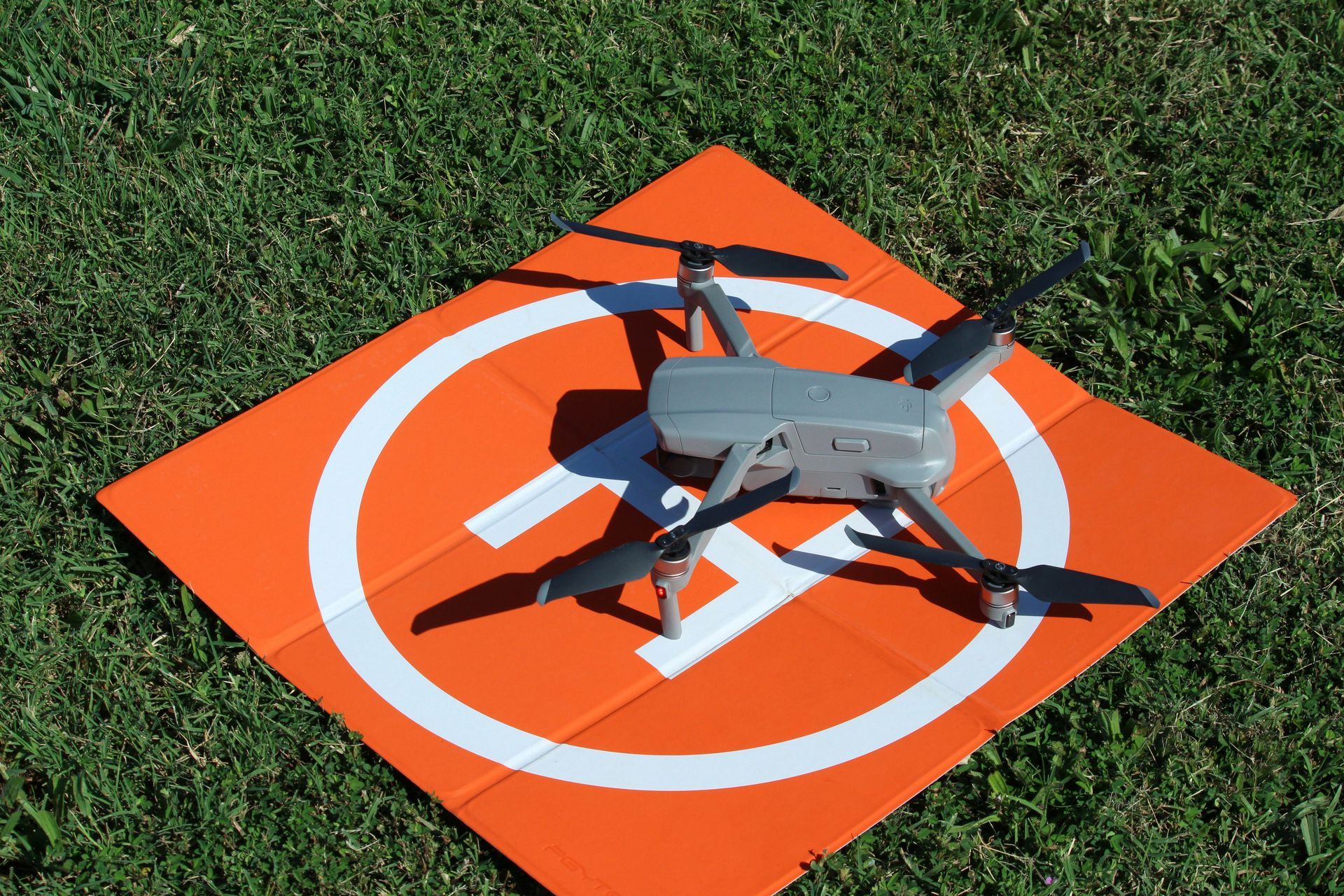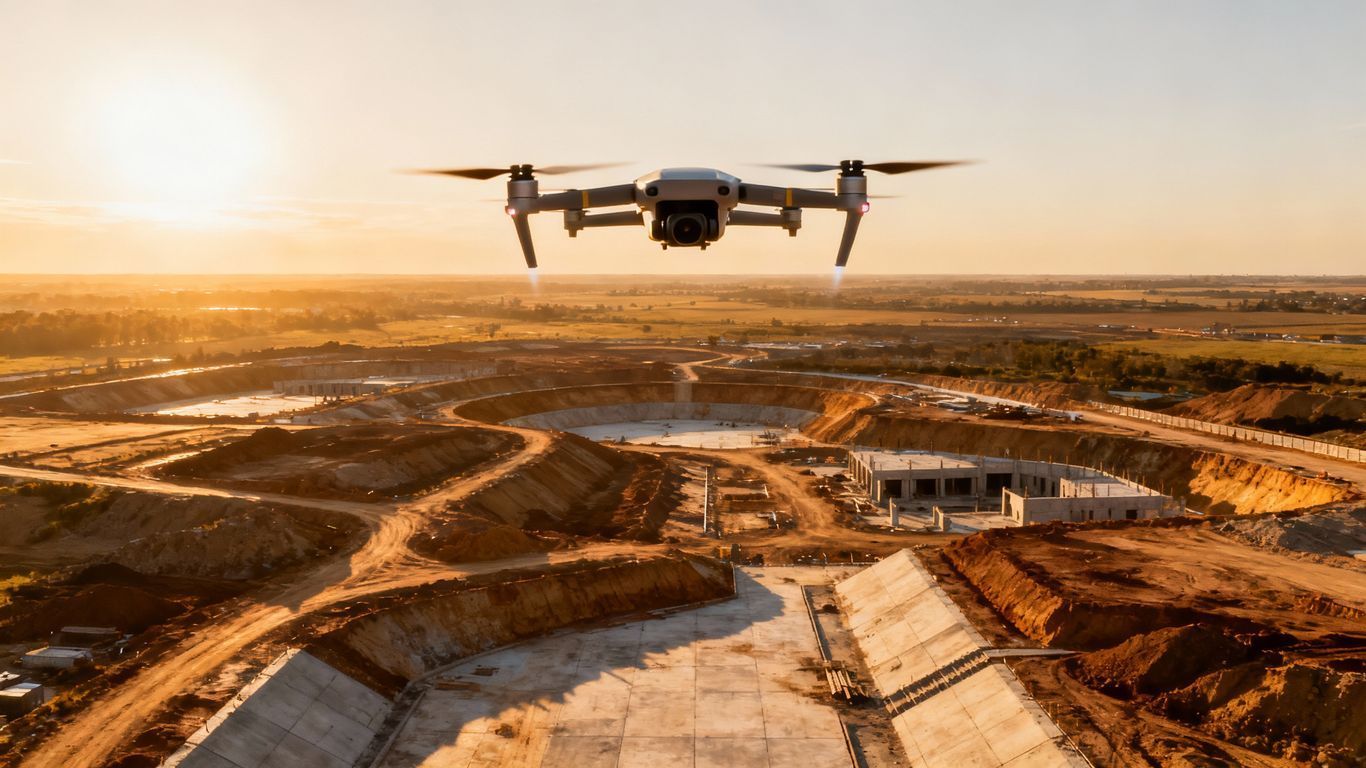Cincinnati OH Thermal Inspections for Moisture Detection
When water sneaks in, it wrecks homes.
Expect crumbling foundations, gross mold, and potential sickness for residents.
How do you catch water damage early?
You need to find that hidden moisture before it ruins your place.
This is where Cincinnati, OH thermal inspections for moisture detection become essential.
But, how do these imaging checks actually function?
And what good do they bring?
Ready to view your construction project from new heights?
Contact 1st Choice Aerials today to schedule your aerial photography, inspection, or thermal imaging service!
On This Page:
How Thermal Imaging Detects Moisture
A thermal camera does not directly "see" moisture.
Instead, this check shows you temperature changes right on the surface.
Wet areas are typically cooler than dry areas due to the process of evaporation, which draws heat away from the material.
This special camera picks up on even tiny shifts in heat.
Then, it turns those into a picture made of different colors.
An experienced thermographer can interpret these thermal patterns to locate moisture problems accurately.
Distinguishing between a moisture issue and other thermal anomalies, like missing insulation or an air leak, requires a trained professional.
The greatest advantage of infrared inspections is that it is completely non-destructive.
There is no need to drill holes or remove building materials.
Benefits of Thermal Moisture Inspections
Early Detection of Hidden Issues
One of the most significant benefits of thermal imaging inspections is the ability to find moisture damage early.
By the time you notice visible signs of water damage or structural damage like stains or peeling paint, considerable harm may have already occurred.
Thermal scans can detect hidden moisture long before it becomes visible to the naked eye.
Catching a small drip you can't see means you can fix it before it turns into a huge, expensive mess.
You can fix a small leak today instead of paying for widespread mold remediation and structural repairs later.
Comprehensive Coverage
Thermal imaging cameras can scan large areas of a property quickly and efficiently.
An inspector can check an entire building envelope, including all exterior walls, in much less time than it would take using traditional moisture meters alone.
Non-Invasive Process
Unlike some methods used to find moisture, an infrared inspection does not require any drilling, cutting, or material removal.
This means you can easily check out busy buildings or finished rooms without ever bothering the people using them.
The non-destructive nature is also perfect for historic properties where preservation is a top priority.
No matter the task, it steps up.
Got a water problem?
Thermal imaging finds moisture in almost any building or material.
It can spot issues in drywall, plaster, concrete, and behind wall cladding.
Inspecting everything from a suburban home to a sprawling industrial park gets a big boost with this technology.
When to Get a Thermal Moisture Inspection

So, when should you schedule inspection services for your Cincinnati property?
Getting a thermal scan often makes good sense in a few important situations.
After Water Damage Events
If your property has experienced any form of water intrusion, from a plumbing failure to storm-related roof leaks, a thermal scan is critical.
It can verify that all affected areas have been found and are dried properly.
Properly addressing this stage prevents fungal colonization that degrades building materials and compromises the integrity of foundational elements over an extended period.
During Property Purchases
Including a thermal scan as part of your pre-purchase inspection can uncover hidden issues the seller might not even know exist.
Armed with these facts, you choose wisely and skip any huge, expensive repair bills after you buy the place.
A small payment now can lift a huge weight off your mind.
For Preventative Maintenance
Regular thermal scans are a smart part of a preventative maintenance plan, helping to catch developing moisture problems before they become serious.
Property owners with large office buildings, apartment complexes, or even factories will find this especially helpful.
When You Suspect a Problem
If you notice musty odors, see discolored baseboards, or suspect moisture, a thermal inspection can confirm your suspicions and pinpoint the source.
Finding the problem directly saves you cash and precious hours, unlike just hoping to stumble on it.
The Inspection Process Explained

Curious about what happens during a Cincinnati, OH thermal inspection for moisture detection?
This method is simple.
It's also very organized.
Here is a general outline of the steps involved.
- Initial Assessment: The inspector will begin by discussing your concerns and gathering information about the property's history. They'll visually scan the area. This helps them quickly spot any clear water stains or broken parts.
- Equipment Setup: The thermographer will prepare their infrared camera and other diagnostic tools. They will often use calibrated moisture meters to get a baseline reading and to confirm thermal anomalies found during the scan.
- Systematic Scanning: The inspector will methodically scan the areas of concern and the entire building envelope. Our team always looks closely at basements, attics, and all around your windows, doors, and plumbing fixtures—these spots often invite moisture.
- Real-Time Analysis: As the scan proceeds, the inspector analyzes the thermal images. They detect odd temperature shifts. These often reveal dampness, sneaky air drafts, or even gaps where insulation is gone. Because of their extensive background, they can precisely discern what the information indicates.
- Thorough Documentation: All findings are documented with high-resolution thermal images, digital photos, and detailed notes. This report captures everything. It shows the property's exact condition from the moment of inspection.
- Review and Recommendations: After the inspection is complete, you will receive a detailed report. Your expert will present their observations directly to you after the inspection. They'll clarify the implications of each discovery and then outline practical steps to resolve any identified issues.
Other Thermal Inspection Applications
While excellent for moisture detection, infrared thermal imaging is a versatile technology with many other uses.
A thorough heat scan often reveals problems hiding just out of sight.
If you own a place, you’ll quickly see how much this helps you out.
Electrical System Inspections
One of the most critical uses for thermal imaging is in electrical inspections.
It picks up on early signs of trouble, like when an electrical connection gets too warm or a circuit is working too hard.
An inspector quickly checks your electrical panels, all the wiring, and other parts of your power system to find issues.
Energy Audits and Heat Loss Detection
A thermal scan is also an excellent tool for performing an energy audit.
This check finds where heat escapes or cold air leaks in, often around windows, doors, and right through the walls.
The camera will clearly show where heated or cooled air is escaping from your home.
You can pinpoint those sneaky air leaks and spots with weak insulation.
Fixing them directly makes your home much more energy-efficient.
Pest and Termite Inspections
Moisture creates an inviting environment for many pests, including wood-destroying insects.
While a thermal camera cannot see termites directly, it can support traditional termite inspections.
You see, it quickly finds those wet patches in your wooden structures, which are precisely the spots where termites and other bugs are most likely to show up.
When you see wet areas, know that a hidden leak is likely feeding termites or carpenter ants.
Pinpointing where moisture comes from lets you stop pest problems right at their source.
Roof and Building Envelope Scans
For commercial properties with large, flat roofs, a roof infrared scan is invaluable.
It can quickly pinpoint areas where water has penetrated the roofing membrane, long before a leak becomes visible inside.
For hard-to-reach areas, an aerial drone equipped with a thermal camera can perform a safe and efficient roof inspection.
Choosing a Thermal Inspection Service
To get accurate, helpful thermal scans, you've got to pick a good inspection team. Before your selection, assess these critical elements.
| Factor to Consider | Why It Matters |
|---|---|
| Certifications | Inspectors should have a certified level of training from an accredited organization like the Infrared Training Center (ITC). You can see they master the equipment, reading every result with accuracy. |
| Experience | Ask about the inspector's experience with buildings similar to yours. Interpreting thermal images is part art, part science, and experience is the best teacher. |
| Equipment Quality | High-resolution thermal imaging cameras produce clearer images and more accurate data. Ask about the equipment they use and if it is regularly calibrated. |
| Comprehensive Reporting | A good inspection offers a detailed report that explains the findings with both thermal and standard digital images. What we looking for in this report? Every important detail and concrete ideas to get things done. |
| Client References | A reputable service should be willing to provide references from past clients. Talking to past contacts can really solidify your final pick. |
Limitations of Thermal Moisture Detection
While thermal imaging is a potent tool, it is important to be aware of its limitations.
This particular tech won't see through solid things, like a concrete wall.
And it won't pick up on moisture buried deep within a building's framework.
It reads surface temperatures only.
The area around you can also affect the accuracy of your readings.
An inspection is most effective when there is a significant temperature difference between the building's interior and exterior.
You can easily spot the heat's distinct shape.
A skilled inspector will understand these limitations.
When you spot something odd with heat, pros often grab a moisture meter to confirm what they're seeing.
Putting these tech tools side-by-side means we can spot problems exactly right.
Conclusion
Cincinnati, OH thermal inspections for moisture detection offer an effective method to protect your property from water damage, energy loss, and even electrical faults.
Without even touching anything, thermal imaging uncovers problems quickly.
That quick discovery means less wasted time, money, and a lot less worry for you.
A complete property assessment using infrared technology is a smart move for any property owner.
Ready to view your project from new heights?
Contact 1st Choice Aerials today to schedule your aerial photography, inspection, or thermal imaging service!





